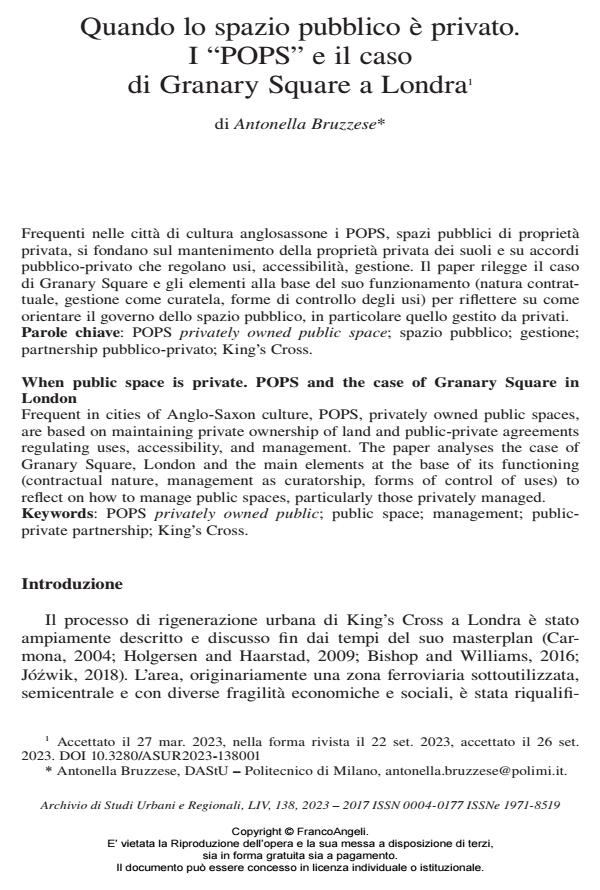When public space is private. POPS and the case of Granary Square in London
Journal title ARCHIVIO DI STUDI URBANI E REGIONALI
Author/s Antonella Bruzzese
Publishing Year 2024 Issue 2023/138
Language Italian Pages 24 P. 5-28 File size 164 KB
DOI 10.3280/ASUR2023-138001
DOI is like a bar code for intellectual property: to have more infomation
click here
Below, you can see the article first page
If you want to buy this article in PDF format, you can do it, following the instructions to buy download credits

FrancoAngeli is member of Publishers International Linking Association, Inc (PILA), a not-for-profit association which run the CrossRef service enabling links to and from online scholarly content.
Frequent in cities of Anglo-Saxon culture, POPS, privately owned public spaces, are based on maintaining private ownership of land and public-private agreements regulating uses, accessibility, and management. The paper analyses the case of Granary Square, London and the main elements at the base of its functioning (contractual nature, management as curatorship, forms of control of uses) to reflect on how to manage public spaces, particularly those privately managed.
Keywords: POPS privately owned public; public space; management; public-private partnership; King’s Cross.
Antonella Bruzzese, Quando lo spazio pubblico è privato. I "POPS" e il caso di Granary Square a Londra in "ARCHIVIO DI STUDI URBANI E REGIONALI" 138/2023, pp 5-28, DOI: 10.3280/ASUR2023-138001